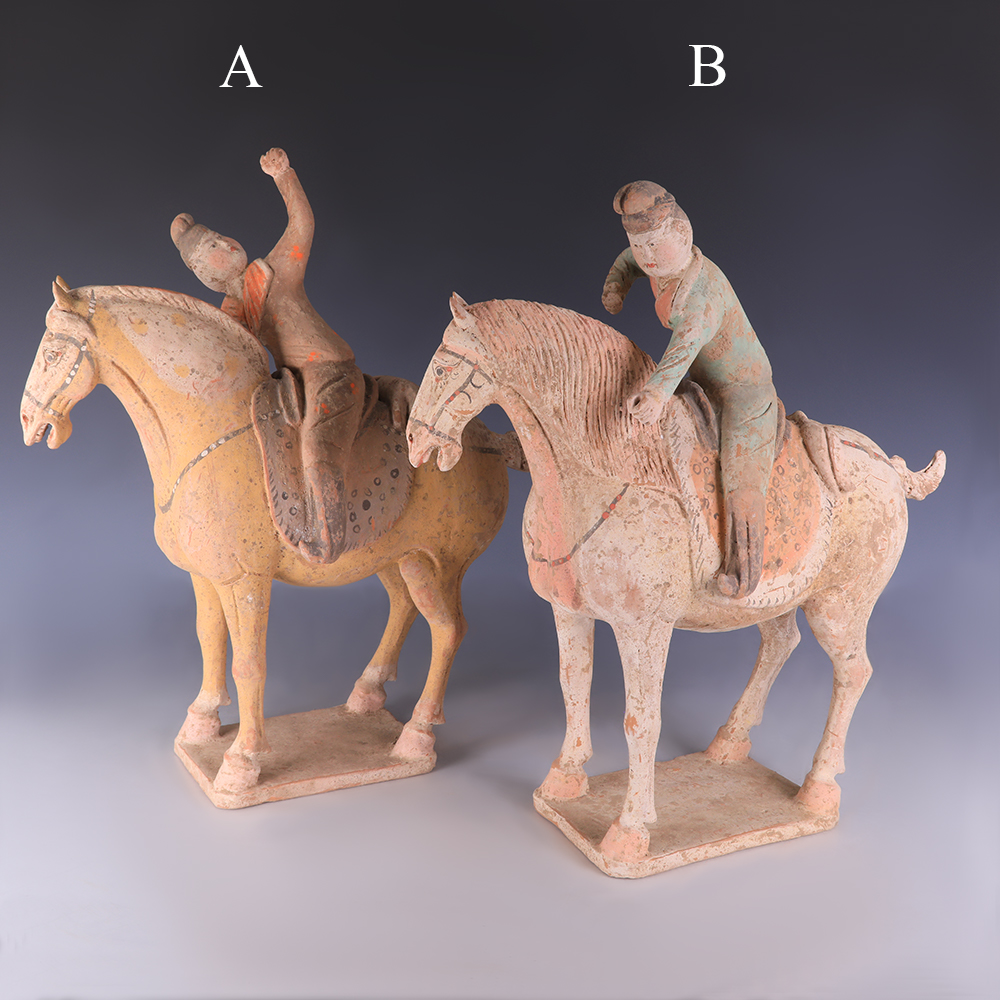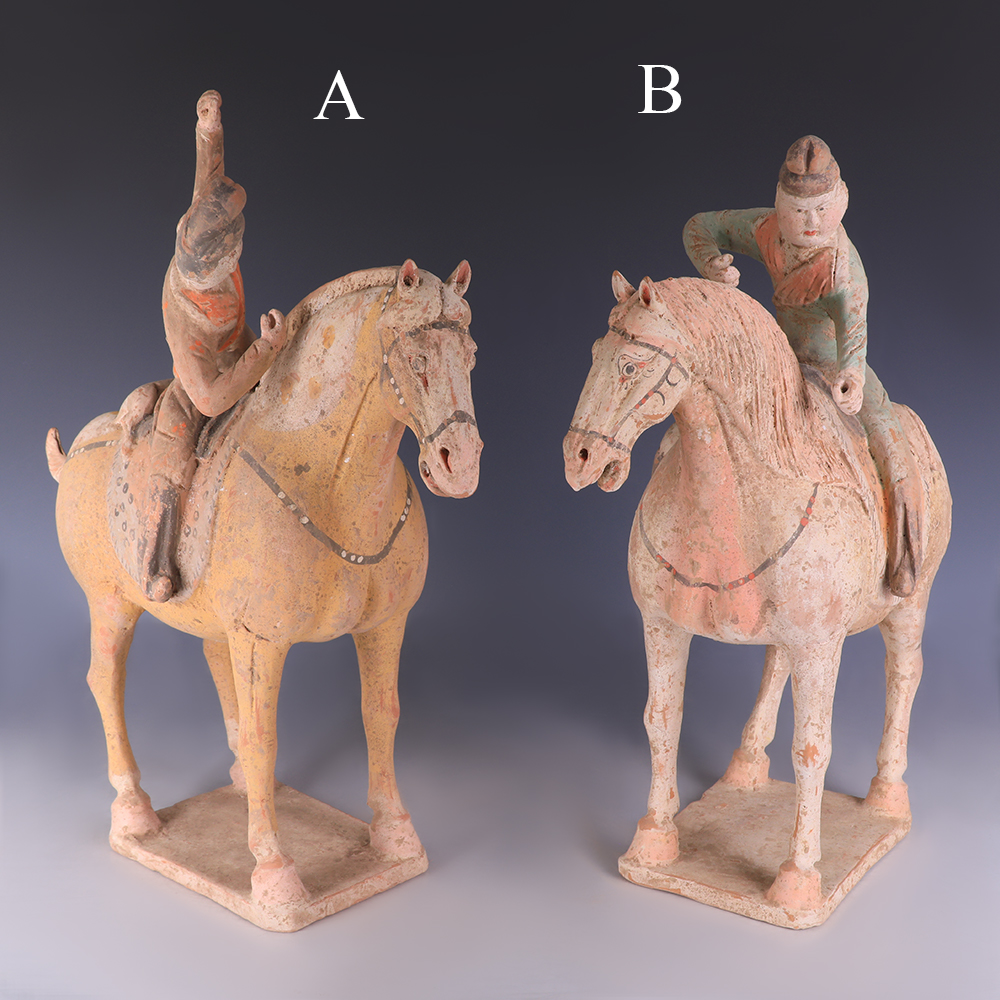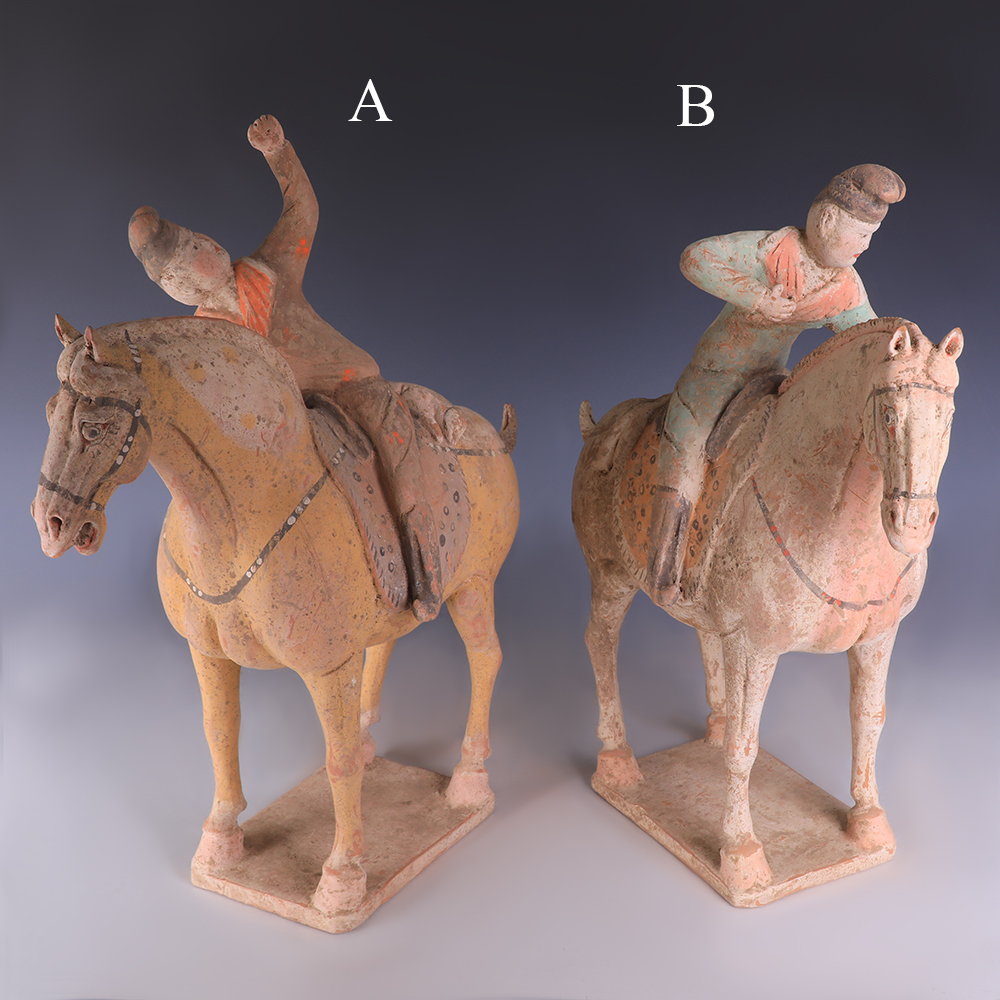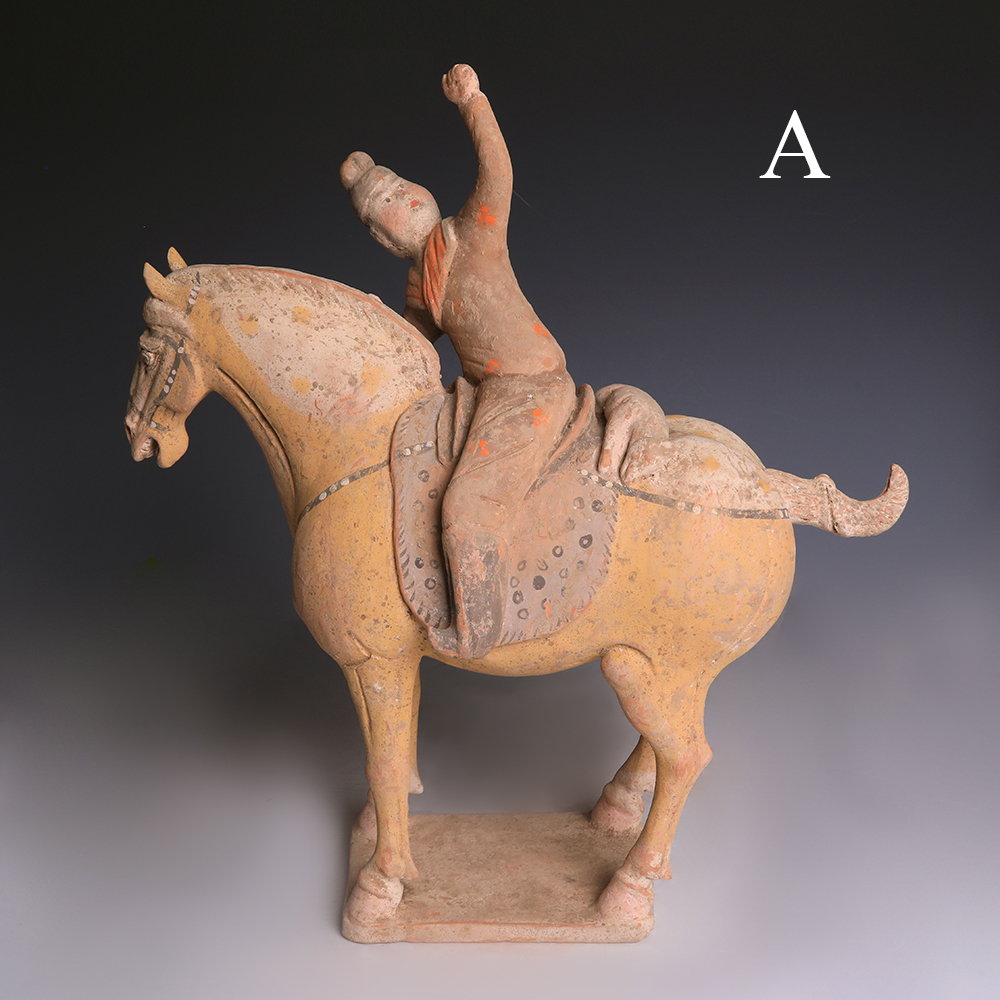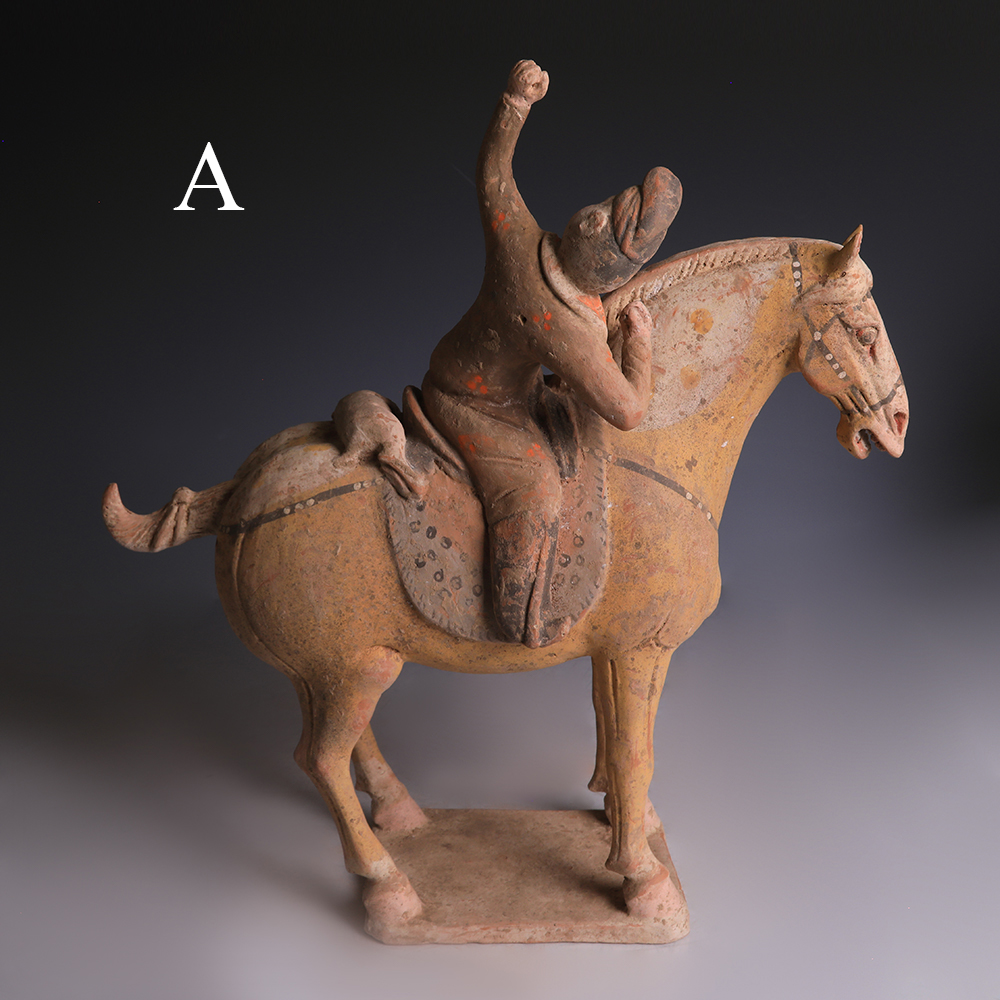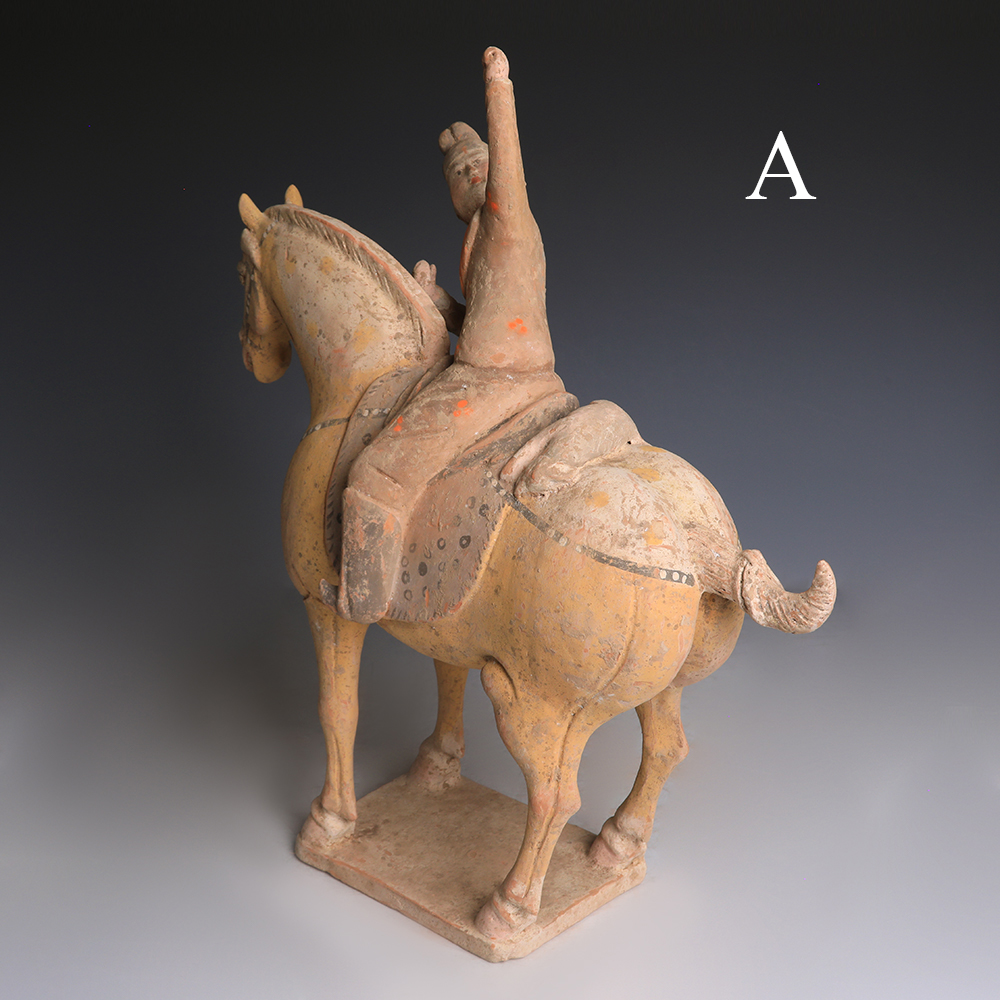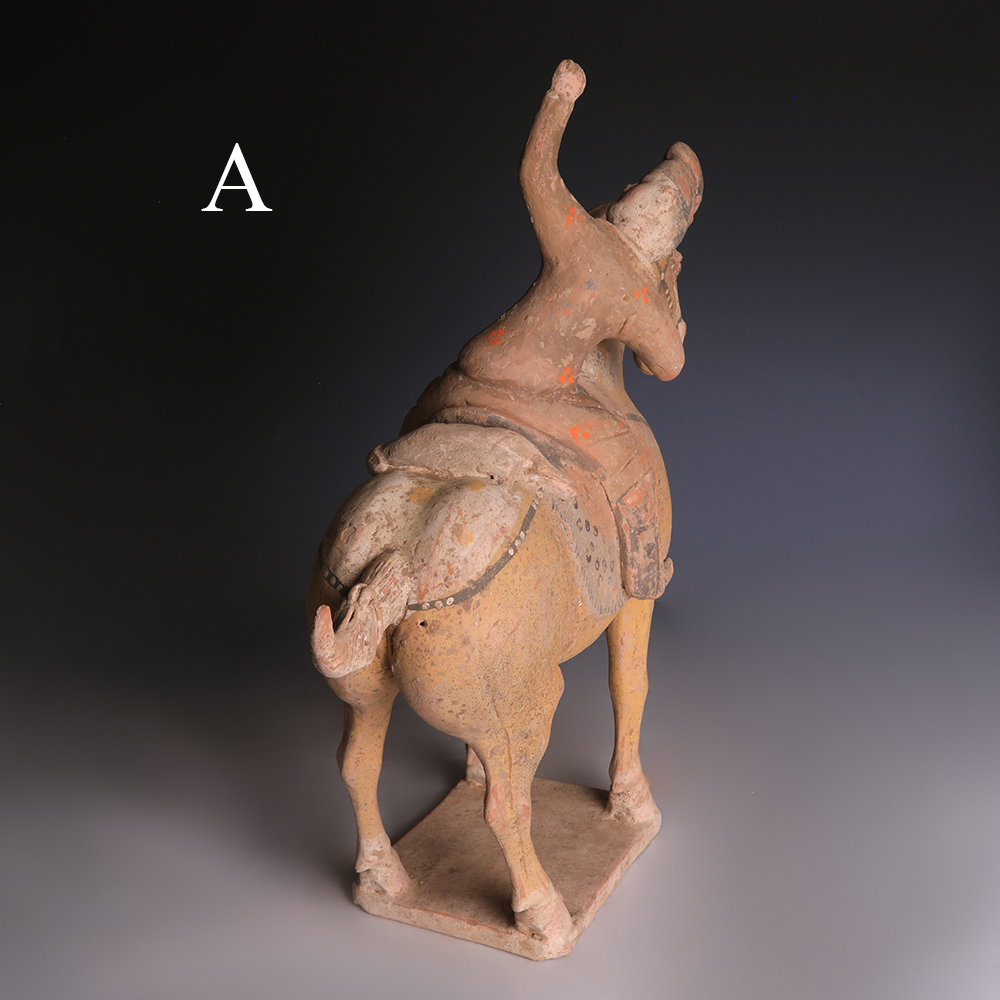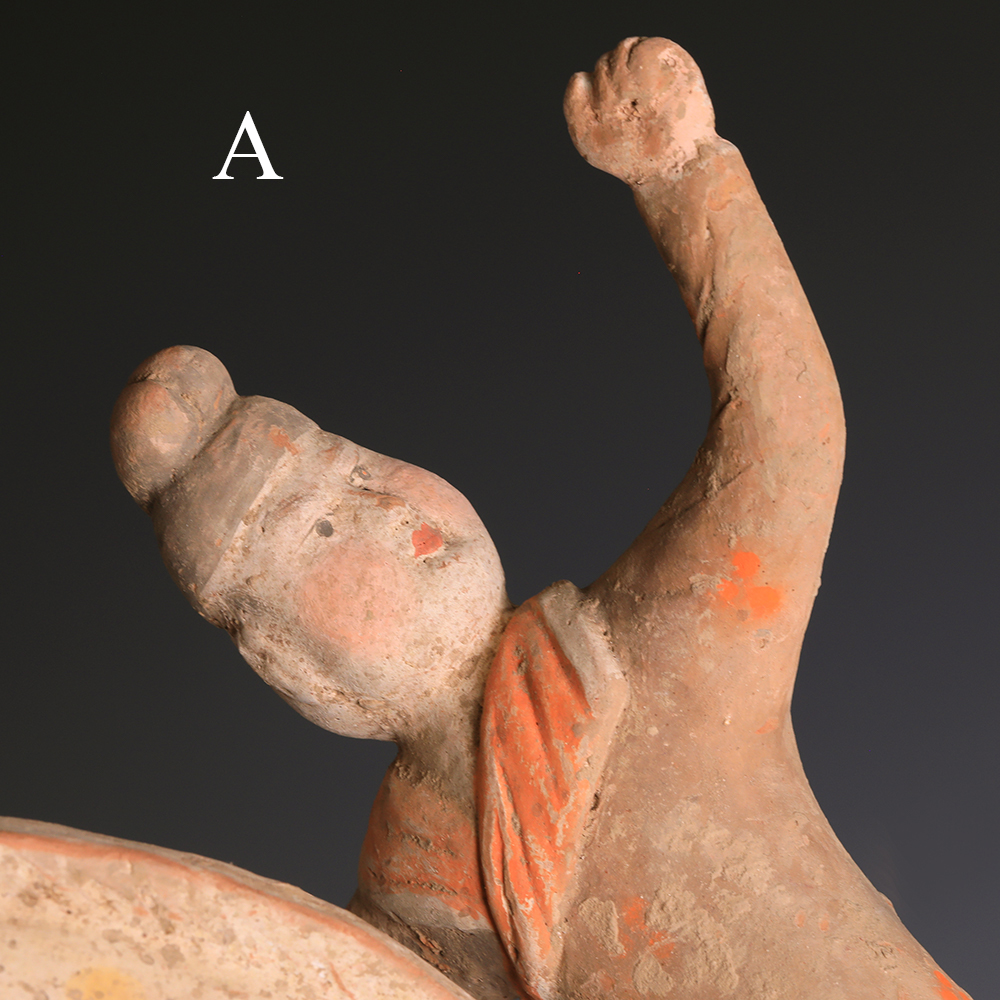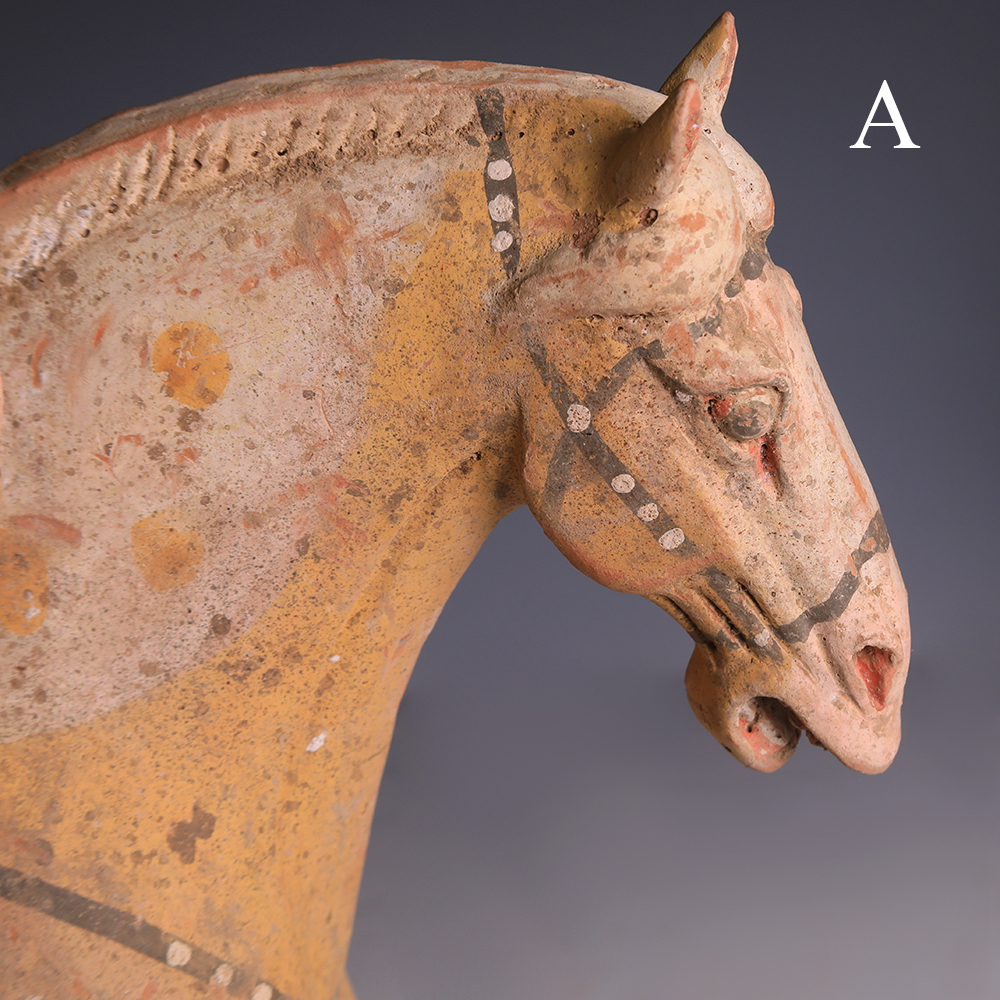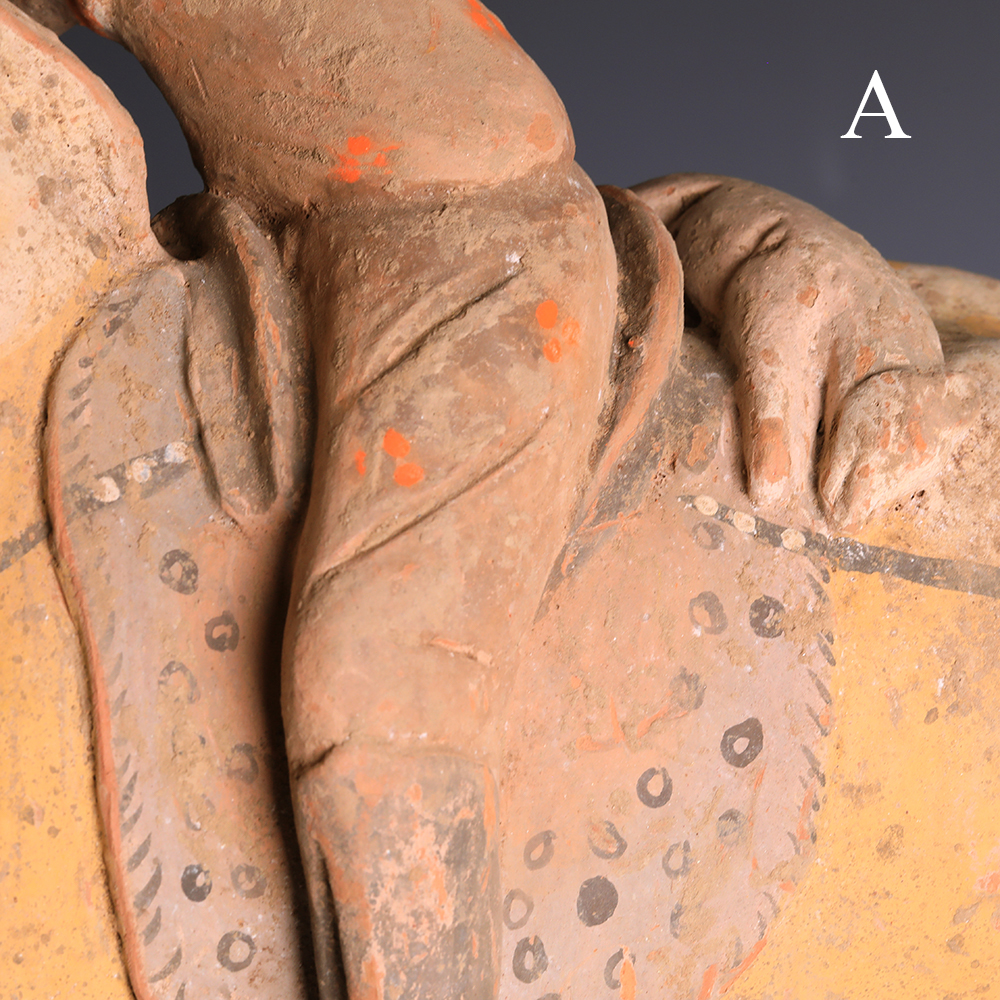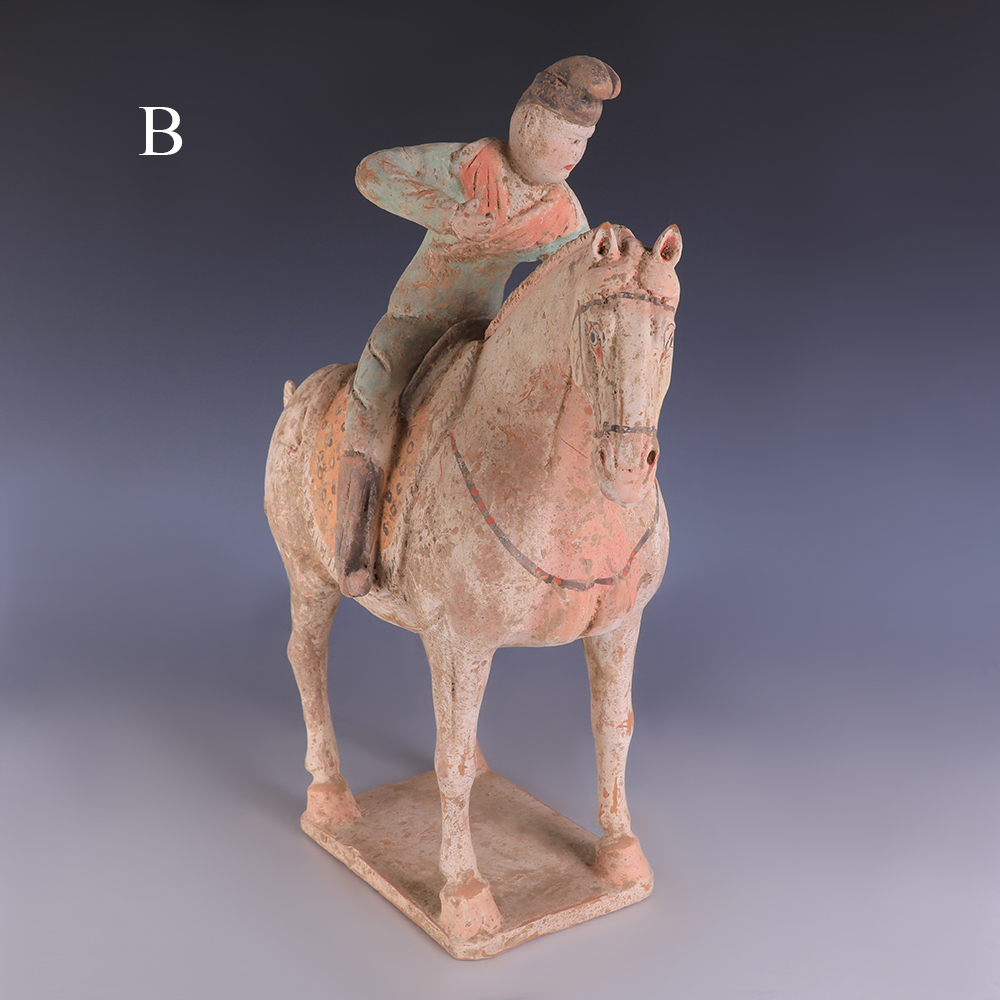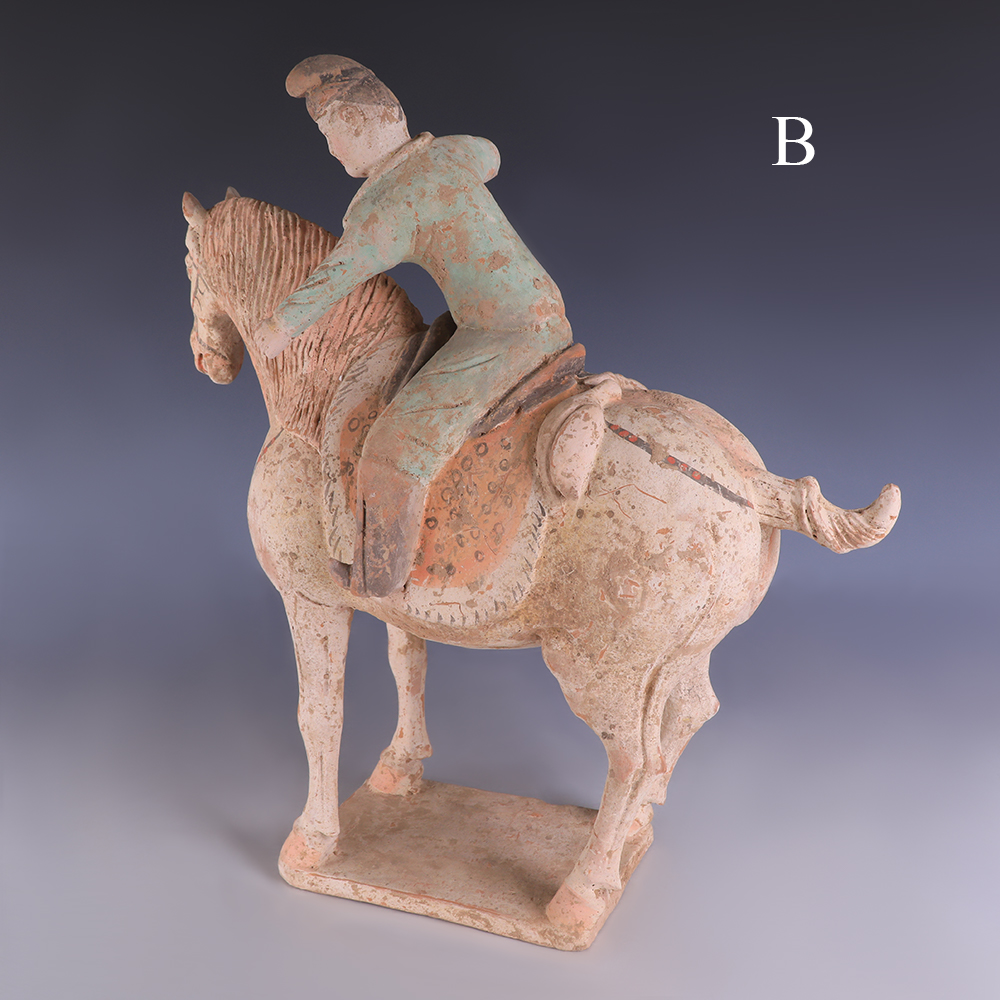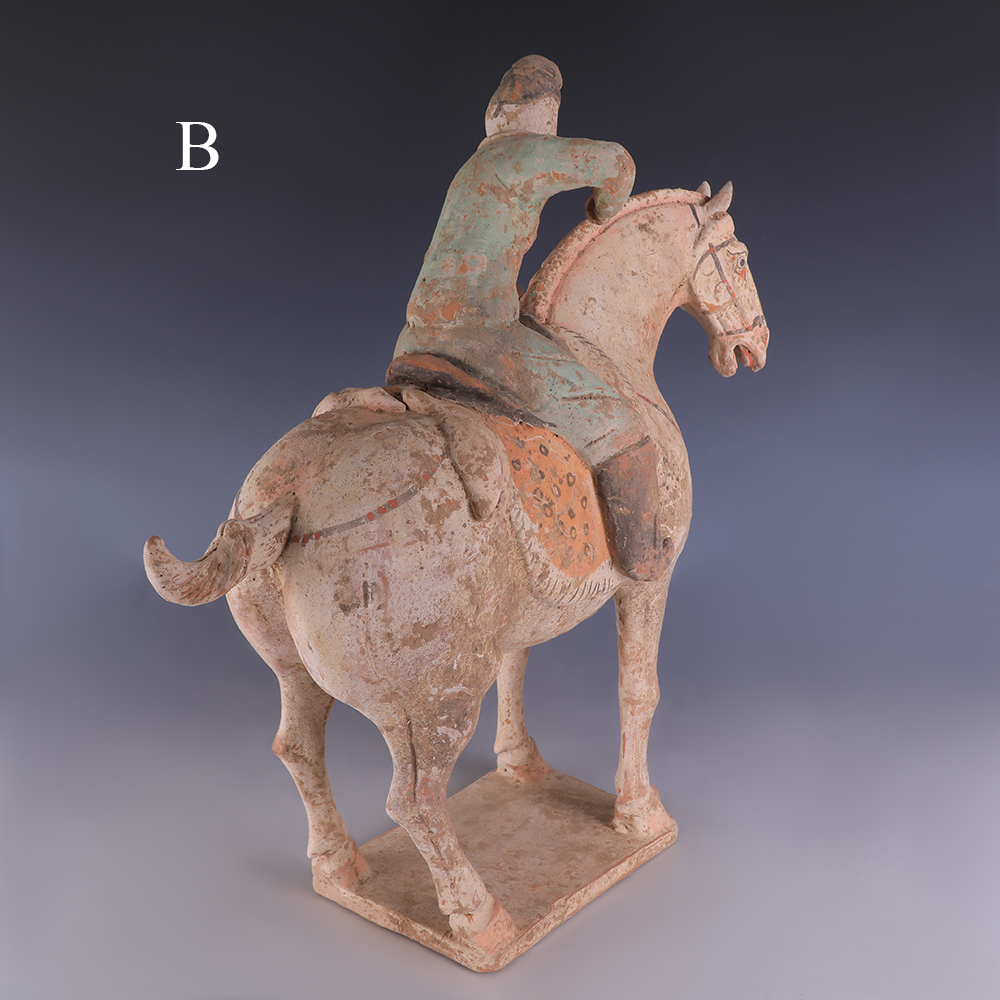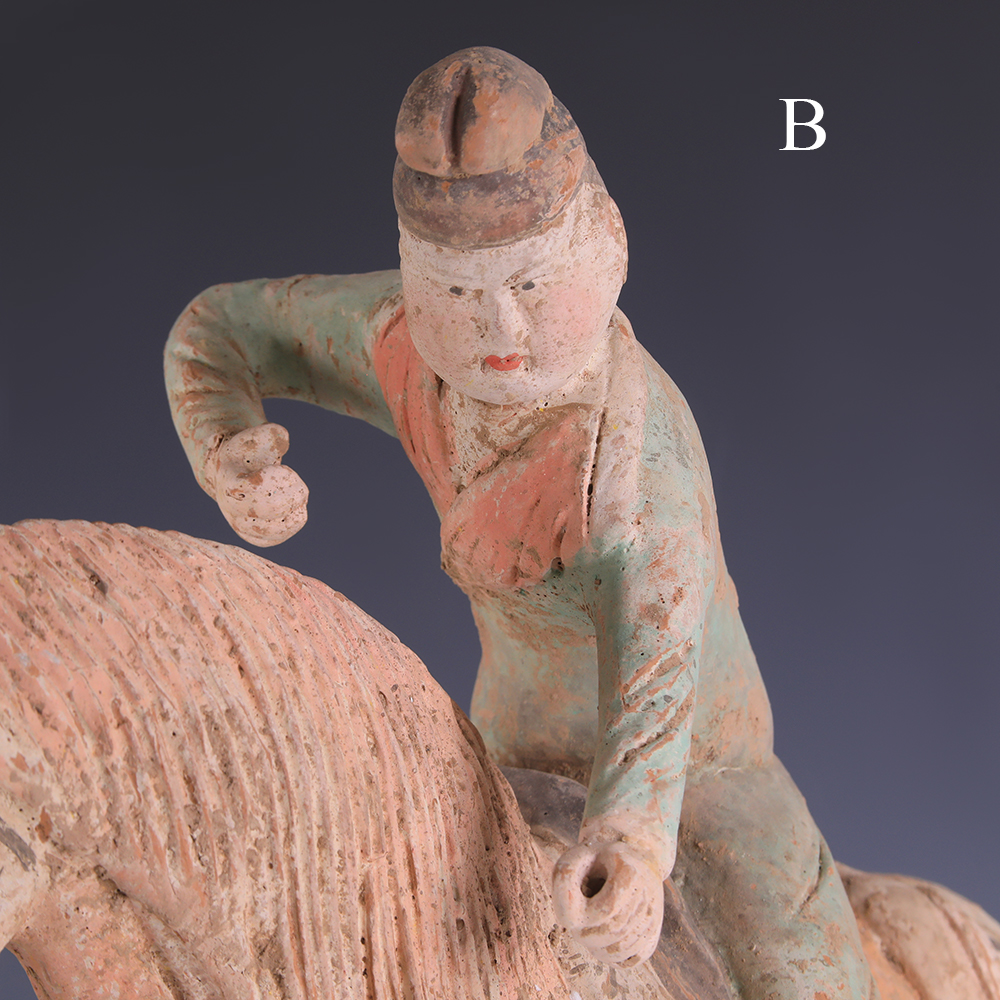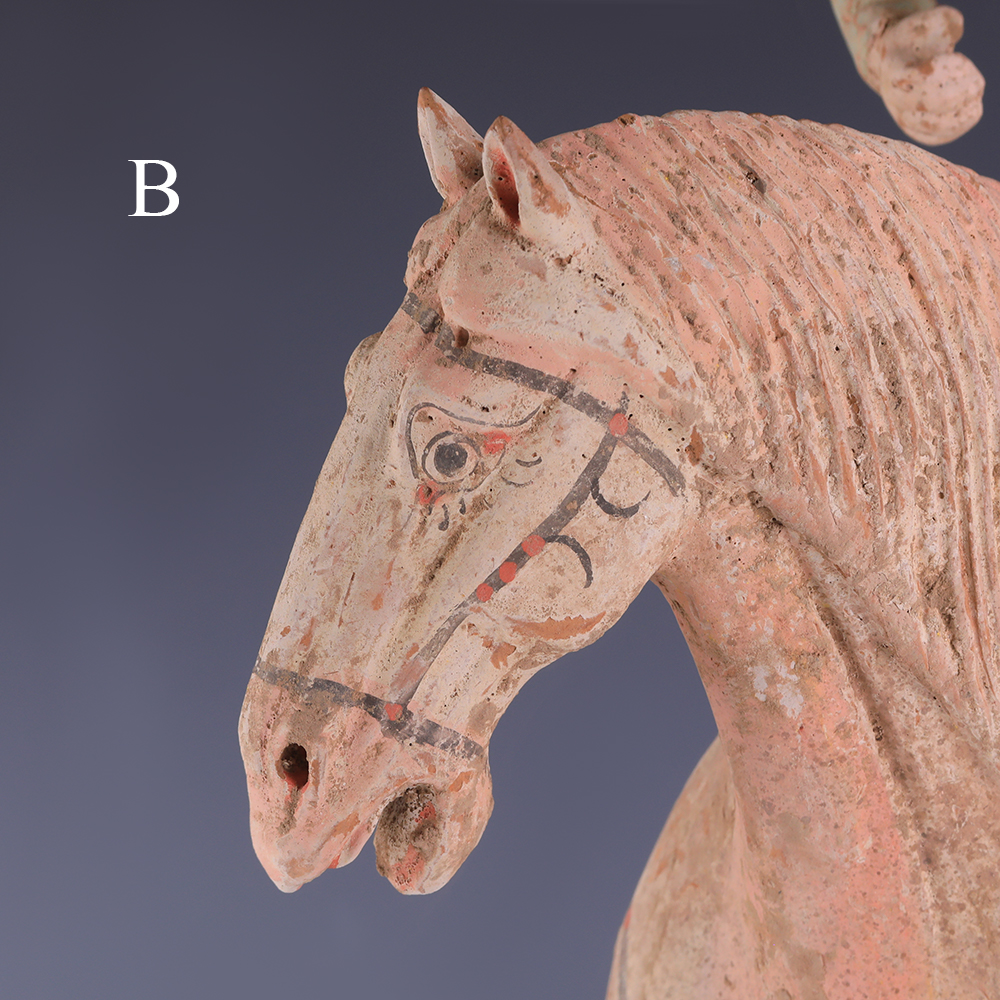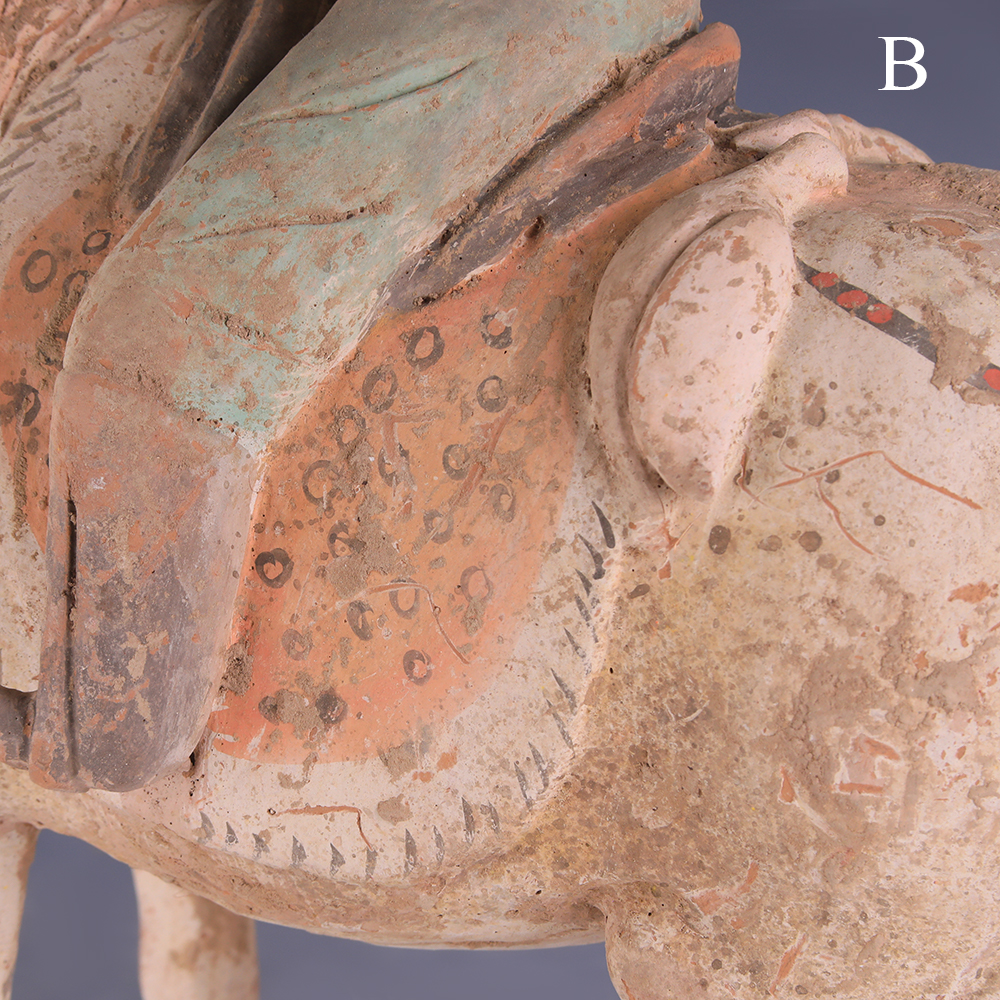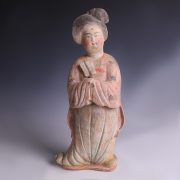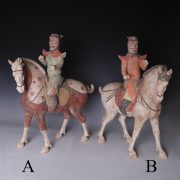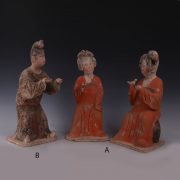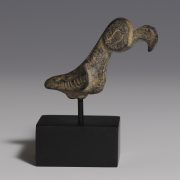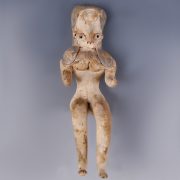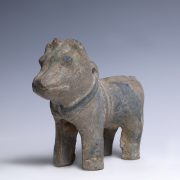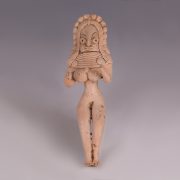Horses were important during the Tang Dynasty and were both the reward of successful military expeditions and the foundation of imperial stability. Brought to China by means of the international Silk Road trade network, horses were also a sign of wealth, with strict laws in place limiting the use of horses to people of a certain rank, and even those serving in the military had to provide their own mount.
The Tang Dynasty marked the resurge of elaborate tombs with the integration of new international influences. Horses from this period were often mass-produced using moulds, but showed individual personality through sancai (three-colour) glaze, a Tang novelty with strong influences from Central Asia. As a symbol of status and wealth in life, horses were also an indication of their owner’s importance in the afterlife, with horse mingqi reflecting the position and rank of the deceased through their forms and scale. The Tang Dynasty saw several developments, including the rise to popularity of female horse-riding, a social change that has been reflected in mingqi through the appearance of figurines of female riders.
For more information on Tang Statuettes, please see our relevant blog post: Terracotta Tomb Attendants and The Horse in Chinese Culture and Art.
